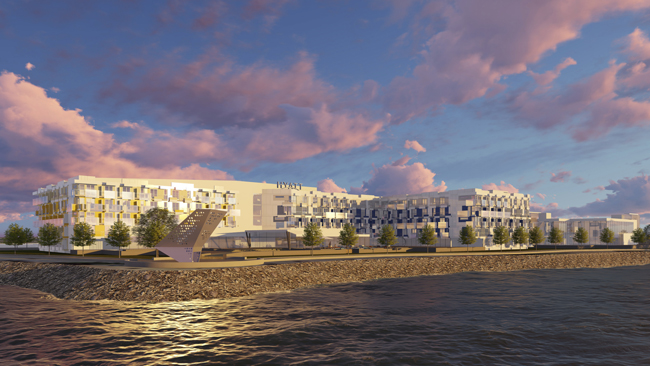
By Andrew Simmons
In the hotel and travel industry, a new group of travelers have captured everyone’s attention. This group has begun to shift trends in the hotel market, forcing hotels to adapt in order to capture their interest.
While previous generations may have selected a hotel based off of brand loyalty or the cost of the room, Millennials are not following in suit. Their sophisticated hotel selection process focuses on the attributes and the culture a hotel provides rather than a price point or a specific brand. Millennials are driving a cultural behavioral shift which places an emphasis on experience above all else.
This shift has resulted in two distinct personalities in hotel trends. The first personality views the hotel as an ambassador of the city and a link to the surrounding community and culture. This view positions the hotel as the destination, not just a place to spend the night.
The second personality views the hotel as a place to reside or as a collection of “pods.” With the mentality of the hotel as a “home base,” the guest is able to explore it on an individual basis. The property, in this case, is more viewed as a landing place for the traveler, not a destination.
The binding factor between these two types of hotel personalities is that F&B venues are aiding in the creation of shared experience and synergies.
Micro-Hotels Are Growing
Where a standard hotel room is within a range of 250-300 square feet, the micro hotel, or “microtel,” is breaking into rooms that are under 200 square feet. Some of these microtels are even in the mid-100 square foot range. The microtel concept was embraced early in Japan and started as stackable “pods” that could be rented by the hour, primarily in airport settings. This trend has now expanded into the United States, with the Pod 51 Hotel in NYC as well as the growing Arlo properties. The largest operators are now embracing this trend with the MOXY brand and even lifestyle brand Thompson’s (now Two Roads Hospitality) Tommie hotel in Los Angeles.
Hotels Are A New “Home”
The emerging trends pushed by the Millennial consumer doesn’t leave out standard hotels or select service properties. These stays are evolving into a space with a residential feel, focusing on shared spaces, often in a dual brand or triple brand configuration. These layered hotels allow for additional options in room types and a varied length of stay, while taking advantage of efficiencies in operations and collaboration of services. This saves money for both hoteliers and their customers. A loyal brand customer can transition from a select service or business accommodations to an extended stay as a “bleisure” (business leisure) experience, often within the same property. As these hotels get regular bookings on the business side, they can now capture a wider range of demographics, including extended stay, vacation travelers, and even those who would choose homestay options.
With the inclusion of breakfast service, these properties have become even more competitive in gaining market share, allowing them to compete with the Airbnb’s of the world.
F&B is the Campfire to Gather Around
As mentioned prior, we are seeing F&B outlets at hotels respond directly to the Millennial influence by adopting local character in a variety of ways. This can range from pop-up restaurants and food truck service to integrating different local restaurants and bars to run specialty events.
These experiences are provided in an effort to cultivate a more social gathering atmosphere, providing the guest with a direct link to interact with local food and residences of the city or town. The lobby bar is often replaced with a “living room” or a gathering place for these interactions to occur. Often, these spaces are designed to be adaptable, with the ability to transform from breakfast service to evening cocktails with a smaller sampling of cuisine in a more tapas type of offering. The variety of services and environments work to help activate the space as a centrifuge for different people to mingle.
Wellness Beats Opulence
These trends in F&B have adapted to a broader theme of wellness. The concept of wellness has been implemented by hotels through healthier food offerings, providing local and farm-fresh food. The focus on wellness can be seen integrated into the guest experience not only in the food and fitness and amenities, but also in the guest rooms and public spaces as well. Rooms are beginning to feature a cleaner and smarter design. This can include anything from water and air purification systems, to therapy-designed lighting systems to aid in relaxation and stress-reduction. Each of these can be adjusted or set by the guest via an app.
Whether it is a base-camp to explore a city, or a room with home-like amenities and feel, the hotel trends for this “new guest” are adapting to a more personalized experience. Both, hopefully, come with a lovely bite, a local brew and a new friend.


